Japan's catastrophe and the disaster that awaits From 60 Minutes. Excerpts:
Scott Pelley and a "60 Minutes" team have been in Japan for over a week, travelling from Tokyo to the port city Sendai to the once-beautiful resort of Matsushima and into the zone surrounding the Fukushima-Daiichi nuclear power plant. There, emergency crews are currently struggling to restore cooling and stabilize pressure inside the reactors.
What we have found in Japan is a catastrophe that reveals both the power of nature and the fragility of human technology.
..
The Fukushima Daiichi crisis is not "one" nuclear emergency - it is four potentially catastrophic events standing side-by-side. In all, there are six reactor stations. Numbers one through four are in peril. Last week, crews risked their lives to get water onto melting uranium fuel. Through explosions and blasts of radioactive steam, a few hundred Japanese joined battle with the most powerful force known to man.
Top experts disagree on fundamental questions such as whether melting fuel rods would cause an explosion or just a fire. Answers are critical to planning for a bigger emergency.
"It's just so uncertain. This is unprecedented, you know, uncharted territory that the consequences could be greater than we expect," Nesheiwat said.
And:
The moment that altered the course of Japanese history was when the tsunami inundated about 400 miles of the northern coast.
You can't picture the enormity of it, so "60 Minutes" stopped in one small town called Matsushima. It was said to be among the most beautiful places in Japan, a famous vacation spot. The name has the same ring to a Japanese as Big Sur or Cape Cod does to an American. Matsushima means "Pine Tree Island" - the trees are about all that's left.
Japan Radiation Maximum by Prefecture
Officials Expect 'Ups and Downs' in Reactor Fight From The Wall Street Journal/Asia, and I found it on Rense. Excerpts:
Until Tokyo Electric Power Co. fully restores power at the reactors and turns on cooling systems knocked out after the March 11 earthquake and tsunami, it faces continued radiation leakage from spent fuel rods stored at the two reactors. Those fuel rods are stored in pools of water that have been depleted, although Tokyo Electric Power, known as Tepco, says the water hasn't completely disappeared, contrary to some reports. (So little volume of water could fit that description, right?)
Repeated spraying of water by military and fire-department personnel appears to have raised the water level, but without a permanent solution the rods still could overheat and possibly break apart, spewing more radiation into the air.
..
The operation to connect power to the No. 3 and No. 4 reactors and turn on the standard cooling systems is expected to last at least several days. Until then, some experts believe the rods are at risk of full meltdown, which could damage the containment vessel and cause a radiation release that would dwarf those so far.
..
A separate storage pool for spent fuel rods also is drawing the attention of some Tepco and safety officials. The area, which takes fuel rods from all six reactors, is located near the No. 4 reactor. The pool is nearly full with 6,375 units of fuel, according to Tepco.
Death toll from Japan’s disasters over 8,000; more than 13,000 missing. From The Washington Post/Found on Rense. Excerpts:
The combined toll of those dead and missing after the March 11 earthquake and tsunami surpassed 21,000 Sunday, and new food-contamination reports surfaced as workers continued to try to tame the radiation-spewing Fukushima Daiichi power plant.
And:
With each day there are new recriminations and doubts about the Japanese government’s and Tepco’s response to the March 11 disaster. News reports have raised questions about whether Tepco hesitated to dump seawater on the overheating nuclear reactors because the use of seawater will corrode and ruin these valuable corporate assets. And the government acknowledged that it had been slow in distributing potassium iodide pills to people vulnerable to the invisible atomic clouds emerging from the nuclear plant.
Japan's Refugees Crowd Shelters And Wait From npr.org. Excerpt:
As many as 400,000 people in Japan are now displaced due to the earthquake, tsunami and subsequent crisis at the nuclear power plant. Doualy Xaykaothao reports for NPR from Fukushima prefecture, in one of the largest shelters in Koriyama City.
Rich Japan's descent into misery stuns From The News Herald. Excerpts:
SHIZUGAWA, Japan (AP) — Bodies are strewn among the knotted skeletons of entire towns. Military helicopters clatter overhead. Survivors who lost everything huddle under blankets in schools-turned-shelters as foreign governments dispatch aid and urge their citizens to flee.
After years spent reporting from desperate and war-torn corners of the world, the scenes I've witnessed here are unsettlingly familiar.
It's the setting that's not.
Here, in one of the richest and most advanced nations on earth, I've found one of most challenging assignments of my career.
..
That first night, it took 14 hours on backroads to cover 180 miles (300 kilometers). When we finally reached the ruined port of Sendai the next morning, we found survivors wearing surgical masks picking through the wrecked junkyard of their annihilated city.
In a tech-savvy society better known for hosting robot marathons, the crisis has produced surreal images, some more apt to appear in a novel about life after a nuclear holocaust: Cut off with no electricity and no phone reception, the hungry and isolated braving long lines outside near-empty grocery stores just to get food; the desperate homeless warming frigid hands in heavy snow above fires fueled by the wooden planks of their own pulverized homes.
In Kesennuma, I saw the hull of a behemoth ship parked inland on a sea of burnt debris beside a wrecked 7-Eleven.
In Shizugawa, a lone Japanese soldier relentlessly swept a small strip of pavement that somehow survived, a futile and slightly bizarre effort considering the entire city surrounding it was reduced to a mashed heap of garbage. (It the only thing he can control in an uncontrollable nightmare..)
And:
We have survived mostly on snack food — peanuts and potato chips and canned coffee scavenged from mostly empty street-side vending machines. When we found one small food store open, it's dwindling stocks already plundered, we bought everything left that we could fit in our car — raw sausages, dried squid, bread.
Japanese restraint is steeped in a culture of tested resilience From The Los Angeles Times. Excerpts:
First a massive earthquake and a devastating tsunami. Now a battle with an out-of-control nuclear reactor facility. How much can one people take?
Though there's obviously a limit to what anyone can bear, cultural features of a society can clearly influence psychological resilience, experts say. As the tragedy drags into a second week, they warn that prolonged stress will lead to heightened trauma for many Japanese people and that levels of sadness and depression will grow.
But right now, as they witness workers risking their lives to bring a crippled nuclear power plant under control or the calm and orderly refugee centers, those who know the culture well says Japan appears to be living up to its reputation for strength and stoicism — a quality they refer to as gaman.
..
The stoicism is deeply rooted in the country's history, says Roland Kelts, a lecturer at the University of Tokyo and author of the 2006 book "Japanamerica." Japan, he notes, has been plagued throughout history by volcanoes, earthquakes, tsunamis and invasions. Disaster and calamities feature commonly in its stories and folk tales. "There is a great deal of pride in the idea that Japan is a long-suffering nation," Kelts says.
And:
"People sometimes make some fun about the rigid societal structures of Japan and how there is so much emphasis on appearance and 'face,' and that you don't show your inner feelings. That is the stereotypical picture," Schaede says. But in times like this, she adds, "that is where they get their strength. This is a helpful feature right now."
..
Though the Japanese have coped remarkably in the early days of the disaster, what happens to their spirit as the weeks and months unfold remains to be seen, Kelts said.
"There is restraint and grace, but there is a certain degree of shellshock," he says. "I think people are still stunned that their world changed in a single afternoon."
Operator of Fukushima nuke plant admitted to faking repair records From The Herald Sun/found it on Godlike Productions. Excerpts:
DAYS before Japan plunged into an atomic crisis after a giant earthquake and tsunami knocked out power at the ageing Fukushima nuclear plant, its operator had admitted faking repair records.
The revelation raises fresh questions about both Tokyo, the scandal-tainted past of the Electric Power Co (TEPCO), and the Japanese government's perceived soft regulation of a key industry.
The operator of the Fukushima No 1 plant submitted a report to the country's nuclear watchdog 10 days before the quake hit on March 11, admitting it had failed to inspect 33 pieces of equipment in its six reactors there.
A power board distributing electricity to a reactor's temperature control valves was not examined for 11 years, and inspectors faked records, pretending to make thorough inspections when in fact they were only cursory, TEPCO said.
Look at the results of Limited Government Response. Little or no Regulations? Anything goes! And then..
Americans: You sure you want this shit?
Scott Pelley and a "60 Minutes" team have been in Japan for over a week, travelling from Tokyo to the port city Sendai to the once-beautiful resort of Matsushima and into the zone surrounding the Fukushima-Daiichi nuclear power plant. There, emergency crews are currently struggling to restore cooling and stabilize pressure inside the reactors.
What we have found in Japan is a catastrophe that reveals both the power of nature and the fragility of human technology.
..
The Fukushima Daiichi crisis is not "one" nuclear emergency - it is four potentially catastrophic events standing side-by-side. In all, there are six reactor stations. Numbers one through four are in peril. Last week, crews risked their lives to get water onto melting uranium fuel. Through explosions and blasts of radioactive steam, a few hundred Japanese joined battle with the most powerful force known to man.
Top experts disagree on fundamental questions such as whether melting fuel rods would cause an explosion or just a fire. Answers are critical to planning for a bigger emergency.
"It's just so uncertain. This is unprecedented, you know, uncharted territory that the consequences could be greater than we expect," Nesheiwat said.
And:
The moment that altered the course of Japanese history was when the tsunami inundated about 400 miles of the northern coast.
You can't picture the enormity of it, so "60 Minutes" stopped in one small town called Matsushima. It was said to be among the most beautiful places in Japan, a famous vacation spot. The name has the same ring to a Japanese as Big Sur or Cape Cod does to an American. Matsushima means "Pine Tree Island" - the trees are about all that's left.
Japan Radiation Maximum by Prefecture
Officials Expect 'Ups and Downs' in Reactor Fight From The Wall Street Journal/Asia, and I found it on Rense. Excerpts:
Until Tokyo Electric Power Co. fully restores power at the reactors and turns on cooling systems knocked out after the March 11 earthquake and tsunami, it faces continued radiation leakage from spent fuel rods stored at the two reactors. Those fuel rods are stored in pools of water that have been depleted, although Tokyo Electric Power, known as Tepco, says the water hasn't completely disappeared, contrary to some reports. (So little volume of water could fit that description, right?)
Repeated spraying of water by military and fire-department personnel appears to have raised the water level, but without a permanent solution the rods still could overheat and possibly break apart, spewing more radiation into the air.
..
The operation to connect power to the No. 3 and No. 4 reactors and turn on the standard cooling systems is expected to last at least several days. Until then, some experts believe the rods are at risk of full meltdown, which could damage the containment vessel and cause a radiation release that would dwarf those so far.
..
A separate storage pool for spent fuel rods also is drawing the attention of some Tepco and safety officials. The area, which takes fuel rods from all six reactors, is located near the No. 4 reactor. The pool is nearly full with 6,375 units of fuel, according to Tepco.
Death toll from Japan’s disasters over 8,000; more than 13,000 missing. From The Washington Post/Found on Rense. Excerpts:
The combined toll of those dead and missing after the March 11 earthquake and tsunami surpassed 21,000 Sunday, and new food-contamination reports surfaced as workers continued to try to tame the radiation-spewing Fukushima Daiichi power plant.
And:
With each day there are new recriminations and doubts about the Japanese government’s and Tepco’s response to the March 11 disaster. News reports have raised questions about whether Tepco hesitated to dump seawater on the overheating nuclear reactors because the use of seawater will corrode and ruin these valuable corporate assets. And the government acknowledged that it had been slow in distributing potassium iodide pills to people vulnerable to the invisible atomic clouds emerging from the nuclear plant.
Japan's Refugees Crowd Shelters And Wait From npr.org. Excerpt:
As many as 400,000 people in Japan are now displaced due to the earthquake, tsunami and subsequent crisis at the nuclear power plant. Doualy Xaykaothao reports for NPR from Fukushima prefecture, in one of the largest shelters in Koriyama City.
Rich Japan's descent into misery stuns From The News Herald. Excerpts:
SHIZUGAWA, Japan (AP) — Bodies are strewn among the knotted skeletons of entire towns. Military helicopters clatter overhead. Survivors who lost everything huddle under blankets in schools-turned-shelters as foreign governments dispatch aid and urge their citizens to flee.
After years spent reporting from desperate and war-torn corners of the world, the scenes I've witnessed here are unsettlingly familiar.
It's the setting that's not.
Here, in one of the richest and most advanced nations on earth, I've found one of most challenging assignments of my career.
..
That first night, it took 14 hours on backroads to cover 180 miles (300 kilometers). When we finally reached the ruined port of Sendai the next morning, we found survivors wearing surgical masks picking through the wrecked junkyard of their annihilated city.
In a tech-savvy society better known for hosting robot marathons, the crisis has produced surreal images, some more apt to appear in a novel about life after a nuclear holocaust: Cut off with no electricity and no phone reception, the hungry and isolated braving long lines outside near-empty grocery stores just to get food; the desperate homeless warming frigid hands in heavy snow above fires fueled by the wooden planks of their own pulverized homes.
In Kesennuma, I saw the hull of a behemoth ship parked inland on a sea of burnt debris beside a wrecked 7-Eleven.
In Shizugawa, a lone Japanese soldier relentlessly swept a small strip of pavement that somehow survived, a futile and slightly bizarre effort considering the entire city surrounding it was reduced to a mashed heap of garbage. (It the only thing he can control in an uncontrollable nightmare..)
And:
We have survived mostly on snack food — peanuts and potato chips and canned coffee scavenged from mostly empty street-side vending machines. When we found one small food store open, it's dwindling stocks already plundered, we bought everything left that we could fit in our car — raw sausages, dried squid, bread.
Japanese restraint is steeped in a culture of tested resilience From The Los Angeles Times. Excerpts:
First a massive earthquake and a devastating tsunami. Now a battle with an out-of-control nuclear reactor facility. How much can one people take?
Though there's obviously a limit to what anyone can bear, cultural features of a society can clearly influence psychological resilience, experts say. As the tragedy drags into a second week, they warn that prolonged stress will lead to heightened trauma for many Japanese people and that levels of sadness and depression will grow.
But right now, as they witness workers risking their lives to bring a crippled nuclear power plant under control or the calm and orderly refugee centers, those who know the culture well says Japan appears to be living up to its reputation for strength and stoicism — a quality they refer to as gaman.
..
The stoicism is deeply rooted in the country's history, says Roland Kelts, a lecturer at the University of Tokyo and author of the 2006 book "Japanamerica." Japan, he notes, has been plagued throughout history by volcanoes, earthquakes, tsunamis and invasions. Disaster and calamities feature commonly in its stories and folk tales. "There is a great deal of pride in the idea that Japan is a long-suffering nation," Kelts says.
And:
"People sometimes make some fun about the rigid societal structures of Japan and how there is so much emphasis on appearance and 'face,' and that you don't show your inner feelings. That is the stereotypical picture," Schaede says. But in times like this, she adds, "that is where they get their strength. This is a helpful feature right now."
..
Though the Japanese have coped remarkably in the early days of the disaster, what happens to their spirit as the weeks and months unfold remains to be seen, Kelts said.
"There is restraint and grace, but there is a certain degree of shellshock," he says. "I think people are still stunned that their world changed in a single afternoon."
Operator of Fukushima nuke plant admitted to faking repair records From The Herald Sun/found it on Godlike Productions. Excerpts:
DAYS before Japan plunged into an atomic crisis after a giant earthquake and tsunami knocked out power at the ageing Fukushima nuclear plant, its operator had admitted faking repair records.
The revelation raises fresh questions about both Tokyo, the scandal-tainted past of the Electric Power Co (TEPCO), and the Japanese government's perceived soft regulation of a key industry.
The operator of the Fukushima No 1 plant submitted a report to the country's nuclear watchdog 10 days before the quake hit on March 11, admitting it had failed to inspect 33 pieces of equipment in its six reactors there.
A power board distributing electricity to a reactor's temperature control valves was not examined for 11 years, and inspectors faked records, pretending to make thorough inspections when in fact they were only cursory, TEPCO said.
Look at the results of Limited Government Response. Little or no Regulations? Anything goes! And then..
Americans: You sure you want this shit?










































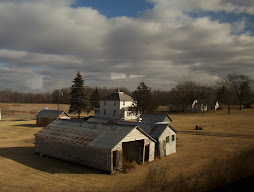


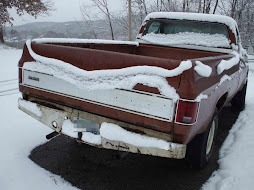








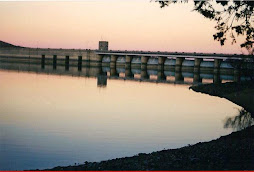






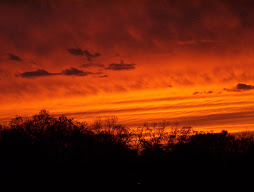
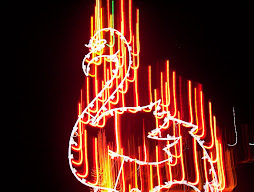




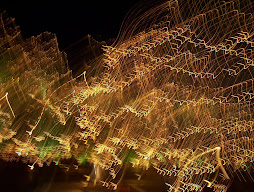



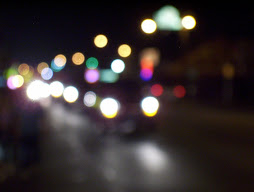









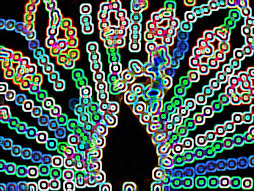









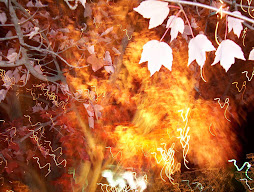













No comments:
Post a Comment